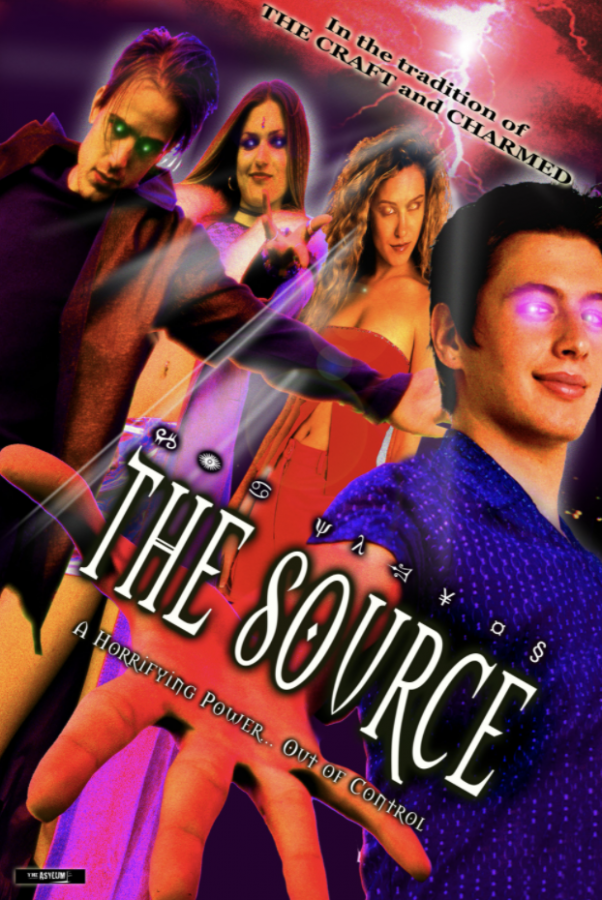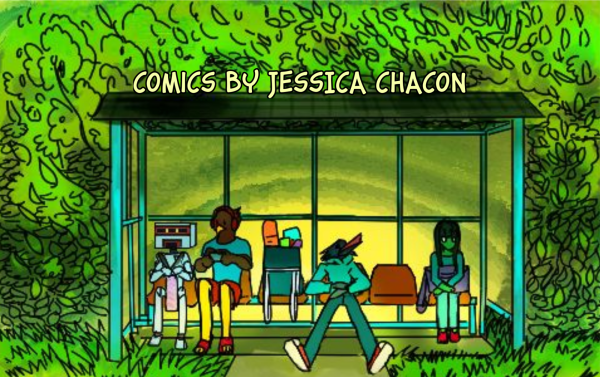The Free-For-All: “The Source” rewrites all the rules of cinematography … in crayon
I know that you’re not supposed to look a gift horse in the mouth, but most of the time, I just can’t help myself. And when I say that, I’m not talking about my degree in pony dentistry — that part is purely coincidental.
What I’m actually talking about are my recent movie-watching habits. At some point, when pandemic-induced ennui was at its absolute height, I just got sick of watching good things. Or, perhaps more accurately, competent things.
Most theaters and streaming services can’t do much to guarantee quality, but since your money’s on the line, there’s at the very least an expectation of competence. I don’t want that.
Enter stage left, the gift horse: free streaming services. The RC Cola to Netflix and Hulu’s Coke and Pepsi. My main squeeze is a little place called Tubi — it’s completely free and completely lacking in content control. I’ve been staring into that putrid abyss of a mouth for the better part of a year now, and it’s starting to stare back.
Ever since I’ve fully sworn off good taste, my sense of time has been a little out of whack. But shit sticks to you better than soap ever could, and I don’t think I could ever forget the first movie that made me want to learn an entire trade out of sheer spite.
That movie is a 2002 teen sci-fi horror film called “The Source” (sometimes called “The Surge”), and that trade is cinematography.
If you’ve ever watched a movie and thought, “Man, this scene would be much better if it was shot entirely from the comfort of a moving tire swing,” then “The Source” is the film for you. And if you’ve ever wondered why more film scenes aren’t lit exclusively by someone out-of-frame violently shaking a flashlight, then not only is “The Source” a film for you, it’s also probably a film by you.
Constant movement is the name of the game with “The Source.” Every time the plot screeches to a halt for a montage, the camera feels the need to pick up the slack by going absolutely apeshit.
It’s like if the bus from Speed directed X-Men with the non-union equivalent of the cast from “The O.C.” That sounds like a great time on paper, and it is, as long as you have really low standards and no medical history of epilepsy. So I’m two-for-two so far… but what is “The Source” actually about?
The most convenient way to explain the plot of “The Source” is to break it down genre by genre. This movie is what we call a “triple threat” — and not the kind that’ll ever main event a WrestleMania, nor the kind that gets picked at #1 in an NFL draft.
So first, it’s a teen movie — that means it’s set in a high school in California. You know the kind with the open-air hallways and outdoor lockers, the ones where every D.A.R.E. PSA is shot? Yeah, one of those. The main characters cover the four different flavors of “teenage outcast” we see in teen movies and Wheatus music videos.
Meet Reese Hauser, the emo kid — he’s our hero, I guess. I only say that because he’s the first one we’re introduced to, the only one with much of an established backstory and the one who saves the day in the end. Other than that, most of the main characters share the same amount of screentime: usually, all scrunched together in one wide shot, while the camera rocks back and forth between two angles so Dutch that they might as well be co-owners of an Amsterdam brothel.
Anyway, Reese is my favorite. The first time you see him, he’s mean-mugging to himself in a mirror and grunting, “Fear me.” This is one of the few shots in the movie where the camera isn’t moving, so you know it’s important.
He also is constantly listening to the same exact knockoff version of the instrumental to Marilyn Manson’s “The Beautiful People.” This happens so often I have no choice but to consider it a leitmotif — it’s common knowledge that all great fictional characters need a musical leitmotif to cement their legacy. Just look at Jaws the Shark, or Bulk and Skull from “Power Rangers.”
Next, meet Zack Bainbridge, who uses a computer a lot — I think he’s supposed to be a nerd, but “The Source” was written by three small children standing on top of each other’s shoulders while wearing a big coat and a fake mustache, so I can’t be sure. He sucks and is completely useless.
Meet Zack’s sister, Ashley, the bad girl. She has zero redeeming qualities as a character and is essentially just evil, but the actress seems to have so much fun playing her that I give her a pass.
Last and least, we have Phoebe Lewis, the hippie. The flower-child movement was famously at its strongest in 2002, and I’d imagine there would be blood in the streets if they went unrepresented. Most of her dialogue is delivered in a way I can only describe as “Ambien-induced.” Because of this, she serves as an excellent foil to the crack-smoking cameraman.
That does it for the teens — time to sci the fi.
These four misfits just happen to stumble across a glowing yellow rock straight out of the original “Star Trek.” To their amazement, they discover that touching it makes them awkwardly float a few inches off the ground while some sick breakbeat hijacks the soundtrack. It also gives them superpowers, but it’s mostly that first thing.
The powers, sadly, aren’t much to write home about. Zack gets mind-reading and does fuck-all with it; Ashley one-ups her big bro and gets full-blown mind-control; mild-mannered Phoebe gets telekinesis and becomes their resident ass-kicker; and Reese… well, Reese can make green skulls appear on people. He also can heal wounds… but again, it’s mostly the first thing.
From that information alone, you can probably picture the rest of the movie — character arcs and all — in your head and not be too far off. But the horror part is where it gets a bit more unpredictable. Truth be told, there’s barely anything scary here, but the one scene that’s definitely supposed to be frightening is… well, it’s nothing short of genius.
First of all, spoiler alert.
Second of all, this next part isn’t a joke — I’m not this funny.
Third of all, there’s a scene where Ashley mind-controls her brother Zack into thinking about maggots, dirt and worms so hard that he becomes catatonic from sheer terror.
Do you smell that gift horse breath yet? It just keeps on giving, doesn’t it?
Still, bug-brains aside, most of the novelty here comes from the — ahem — inspired camerawork, lighting and general aesthetic of the film, with enough flashes of scripted absurdity to keep you strung along to the end. But other than that, it’s basically “Chronicle”: I can only imagine that if someone watched “Chronicle” and then “The Source” back-to-back as a double feature, the shock from the drop in quality would kill them instantly.
And though I wouldn’t dare do such a thing, it’s the freedom-loving American in me that will kiss the ground Tubi streams on for giving me the right to do so.
God bless Tubi, God bless “The Source” and God bless freedom. Especially when it’s legitimately free.
You can watch “The Source” here or here. It might not be worth a dime, but they’re not asking for one, either.





